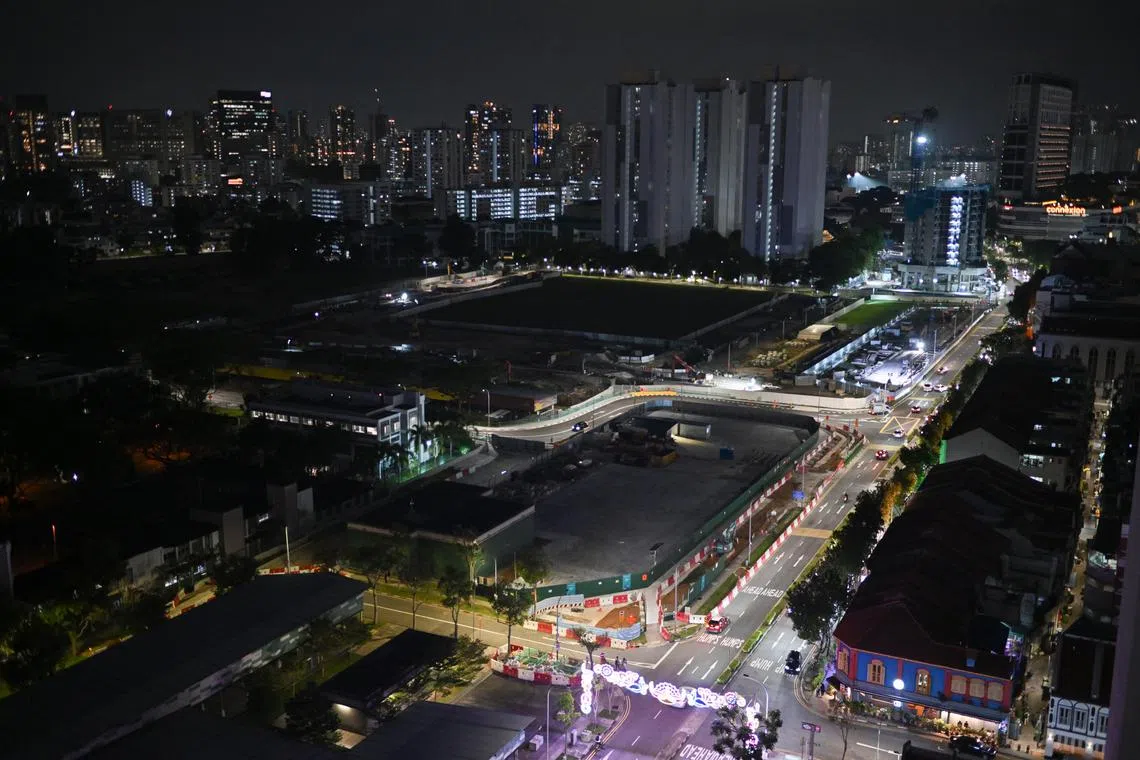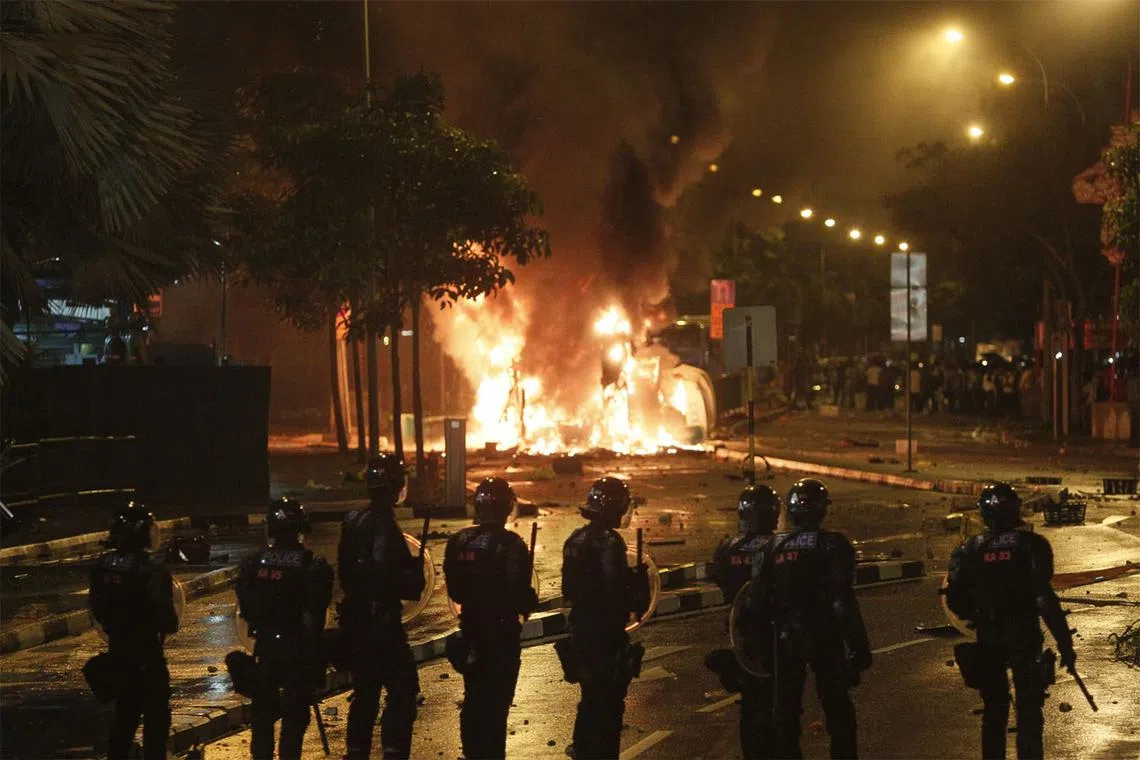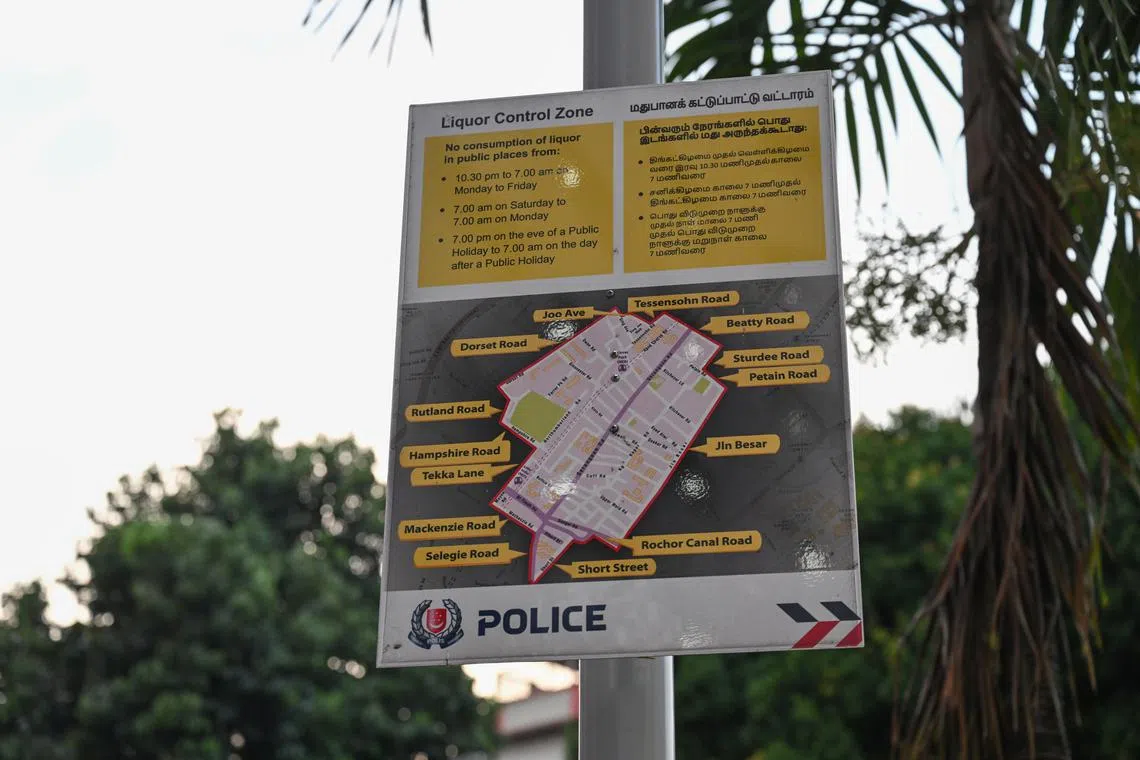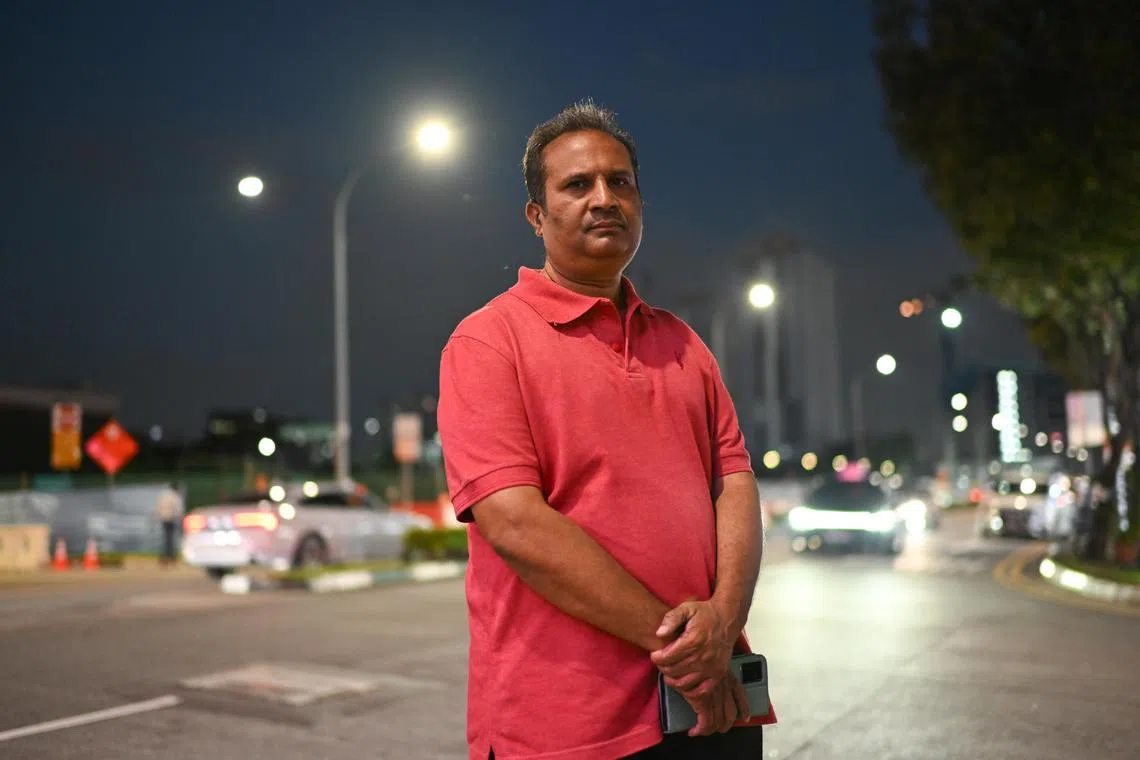Little India residents, shopkeepers deeply impacted by 2013 riot
Sign up now: Get ST's newsletters delivered to your inbox

Mr Subramani Purushothaman witnessed the Little India riot from the corridor of his unit in 2013.
ST PHOTO: SHINTARO TAY
Follow topic:
SINGAPORE - Before 2013, Mr Subramani Purushothaman avoided shopping in Little India on Sundays, even though he lives in Block 661 Buffalo Road, less than 100m from Tekka Centre in the district.
The 57-year-old father of three teenagers, who has been living there for about 20 years, said the area was previously packed with workers on Sundays, which made it too noisy and disorderly for his family.
Once, a man knocked on the front door of his four-room flat, which is on the 22nd floor of the 23-floor block. He wanted to use the toilet.
Said Mr Purushothaman, who works as an aerospace machinist: “We didn’t like to go down (from our flat) on Sundays because it was crowded with workers, who were often drunk.
“Now, the situation is controlled. If there are people sitting around drinking, the police will tell them to throw their drinks away in the rubbish bins.”
The turning point came on Dec 8, 2013, when a riot erupted in Race Course Road, about 100m from his block, at about 9.20pm.
It happened after an accident claimed the life of Indian migrant worker Sakthivel Kumaravelu.

A view of Race Course Road in Little India in Nov. In Dec 2013, a riot erupted there after a construction worker from the Indian state of Tamil Nadu was killed in a traffic accident.
ST PHOTO: SHINTARO TAY
The 33-year-old was drunk as he tried to board a private bus in Tekka Lane. As he chased after the bus, he lost his balance and fell face down into the path of the vehicle, which crushed him.
Word of his death spread quickly, and a crowd surrounded the bus and began hitting it.
What followed was a riot that lasted for two hours, during which over $530,000 worth of property was damaged.
In the wake of the violence, restrictions were introduced on where and when alcohol could be drunk. New areas were designated for buses to pick up and drop off foreign workers on Sundays.
A Committee of Inquiry (COI), set up in the aftermath, heard from witnesses such as the chairman of Tekka Residents’ Committee and officers from Rochor Neighbourhood Police Centre.
The witnesses said the area would typically see about 100,000 South Asian workers each Sunday, on the workers’ day off. Saturdays were usually a work day.

The riot lasted for two hours, during which over $530,000 worth of property was damaged.
PHOTO: ST FILE
They also said Little India would be especially crowded on the first Sunday after the workers received their wages. The workers are usually paid at the start of the month.
The COI did not think alcohol was a direct cause of the riot. But it found alcohol to be a major contributory factor to the nature and escalation of the riot.
Closing shop
A resident, who wanted to be known only as Mrs Peh, 74, said she saw rioters hurling items at police officers. These included tomatoes that they took from a nearby provision shop.
“I saw many angry rioters throwing rocks at the bus and ambulance before overturning and setting fire to some of the vehicles,” said the retiree, who lives in the same block as Mr Purushothaman and has been living in the area for 43 years.
Migrant workers who arrived later in shuttle buses also joined in, she said.
“There were too many rioters and too few police officers on the ground in the beginning,” added Mrs Peh, who stood in the corridor outside her unit with her son-in-law during the incident, taking photos of the carnage.

Riot police standing guard in Little India on the night of the incident.
PHOTO: ST FILE
Mr Ruthirapathy Parthasarathy, honorary secretary of the Little India Shop Owners and Heritage Association, said he arrived in Little India after 10.30pm, about an hour after the riot erupted.
Together with some volunteers, he visited as many shops as he could. He got the owners to lock up. Some of the shops were already damaged by then.
“Many of them (shopkeepers) listened to us,” said Mr Ruthirapathy, 54. “They either shuttered their shops or secured their goods (which were left outside).”
Lots of litter
Residents said it was not uncommon before the incident to see people in the estate loitering at staircases and leaving litter, especially empty beer cans and food packets.
They also said the lifts and staircase landings reeked of urine and vomit.
The COI report noted that prior to the riot, there was an increasing problem with alcohol in Little India, even though there was no increase in liquor licences issued to businesses in the vicinity in the five years before the incident.
Said the report: “While there was no hard data available on the rate of public intoxication in Little India, anecdotal evidence suggested that it was an increasing problem in the area.
“This is possible without an increase in liquor licences: People can buy more liquor from the same number of stores.”

Public drinking in Little India remains banned from 7am on Saturday to 7am on Monday.
ST PHOTO: SHINTARO TAY
Immediately after the incident, temporary measures were put in place in Little India to clamp down on public drinking and alcohol sales over weekends and public holidays.
On April 1, 2015, the area became a Liquor Control Zone
The ban, which also applies from 7pm of the eve of a public holiday to 7am of the day after the public holiday, remains in force.
The restrictions have made the area cleaner, quieter and more peaceful, said Mrs Peh.

In the wake of the violence, restrictions were introduced on where and when alcohol could be drunk.
ST PHOTO: SHINTARO TAY
Mr Alvin Tan, an MP for Tanjong Pagar GRC, said there have been significantly fewer incidents involving migrant workers as a result of the limit placed on alcohol consumption, and the presence of auxiliary police and police officers in the area.
Mr Tan, whose constituency includes the Tekka, Klang and Race Course Road areas, became an MP in 2020. He was working in a bank in Hong Kong when the riot happened.
“I read the news in the media and, like many, was shocked,” he said, adding that he still receives feedback from residents, particularly on Sundays, of migrant workers loitering at the void decks.
He said his grassroots team actively takes steps with groups such as auxiliary police officers and the Ministry of Manpower’s Assurance, Care and Engagement Group to advise the workers to use community spaces instead and minimise inconvenience to residents.
“I understand the concerns of residents and we are therefore proactive in our actions,” said Mr Tan.
He added that residents who have been living in Little India for more than 10 years told him that they remember the incident vividly, and were grateful that the police responded swiftly that day.
“I hear feedback from residents who are also concerned about the welfare of guest workers, and asked me if there are spaces for them to rest on their rest days,” said Mr Tan.
To foster greater understanding in Little India between residents, the business community and guest workers, volunteers have set up the ground-up group Our Migrant Guests, he said.
The group organises events to engage the workers and highlight to the community their contributions to Singapore.
Changes to the area
After the riot, two new bus terminals were built for the workers – one in Hampshire Road and the other in Tekka Lane. This was to ensure workers would be picked up and dropped off in the area in an orderly manner.
Ms Elsie Zhang, who works as a manager with the Singapore School Transport Association, one of the companies providing migrant workers with transport options, said its buses had to wait in a small area in Tekka Lane before 2013.
“The facilities then were no good. There was no shelter, nothing. It was just an empty field,” she said.
“It has become better with the new bus interchange because there is an overhead shelter, a large area to sit in and lanes for people to properly queue for buses to take them to their dorms.”
Mr S. Anand, who used to sell briyani at his shop near Kerbau Road, said business used to be good on Sundays due to the influx of foreign workers.
But after the riot, with people avoiding the area, he saw a significant drop in footfall. He gave up the business in 2014 and is now a security officer.

Mr S. Anand used to sell briyani at his shop near Kerbau Road. After the riot, with people avoiding the area, he saw a significant drop in footfall. He gave up the business in 2014 and is now a security officer.
ST PHOTO: SHINTARO TAY
Mr Ruthirapathy said many migrant workers helped on the night of the incident by telling people to evacuate the area and urging those involved in the violence to stop.
“Most of the workers had to borrow money to come to Singapore for employment,” he said.
“The majority moved here because they wanted to earn a living. They appreciated that Singapore gave them this opportunity.”

